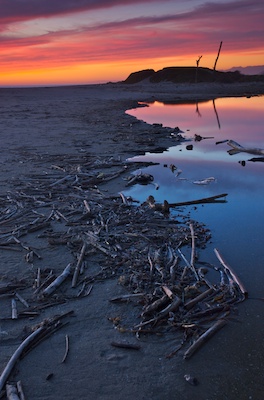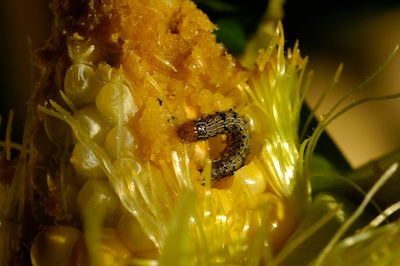
Thursday, December 13, 2007
Friday, November 16, 2007
Joshua Tree National Park




Climbers sometimes joke about the poor rock quality in Joshua Tree and fleets of RVs that flood the park, but I'll always jump at the chance to get lost in the Wonderland of Rocks, or to limp back to camp after a few bouts with some overhanging crack climb. The most compelling aspects of Joshua Tree, however, are the landscape and the unique flora and fauna. The rugged terrain and hardy vegetation speaks of tough ecosystem that with a little rain, and some exploration, shows itself in a mosaic of miniature Edens.
Saturday, October 6, 2007
California Coastline




November 12, 2007 - This evening I surfed alone near where I grew up as child and easily lost myself in the rhythms of catching waves and paddling through the backlit breakers. Subtle connections such as this are my primary motivation for being outside, but sometimes they catch me by surprise, as if some primordial being inside me is more cognoscint of them than my conscious self.
Despite this connection with the ocean, I have to admit to feeling somewhat unresolved as to how we, as humans, have influenced a place that in many ways is our lifeblood. We clearly love our coastlines, but like a pack of surfers scrambling for a single wave, we are dealing with a resource that is finite. And yet unlike a wave, the sea is sending us signals that all is not well.
Consider the decline in marine species that were previously abundant, such as tuna and swordfish. Also troubling are the increased incidences of red tides, brought on by agricultural and domestic run-off that flows into creeks and tributaries and then instigate a "bloom" of growth along the coasts - a bloom that although essentially natural now occurs so frequently that it disrupts marine ecosystems (and tonight gave the water the look of amber ale). And perhaps worst of all are the offshore platforms, there because of our increasing demand for petroleum energy.
Of course, in many ways the same means that provided me with a childhood at the beach and the experience I have had in the ocean have been at a cost, whether it is due to my family's beach house or the gas that I burn to drive to the beach. I am a part of the problem. As I consider my role as an environmental photographer, and a soon to be father, I need to give back more than I take away.
Tuesday, September 11, 2007
Grand Canyon of the Tuolumne River



As Yosemite Valley's sister valley, the Hetch-Hetchey Valley and Tuolumne River Gorge provides a glimpse of what the Yosemite may have looked like a century prior to the influx of paved roads and RVs. Perhaps most telling of the state of this valley was my companion's remark of how unusual it was to be hiking through a landscape of such beauty with so few named landmarks. Yet even our mark as a species is felt in this canyon; where Hetch-Hetchy Dam blocks the Tuolumne River a reservoir has back filled the canyon to just below Pate Valley (seen in the image second from the left). John Muir fought the construction of the dam in his later years, but was unable to dissuade the politicians - San Fransisco's thirst represented a greater need.
Nonetheless, this valley remains as a reward for those willing to work to get there. Even during the fall, when the series of waterfalls below Glen Aulin have lost some of their punch, the inky-black pools worn into the granite and the alpenglow on the towering cliffs are as they have been since long before John Muir first experienced them.
Wednesday, August 15, 2007
California Agriculture

The variety and abundance of food in California hits its peak in the summer. But at what cost? When shopping at farmer's markets, one is practically delighted to see worms and grubs on the fruit and vegetables - after all isn't the presence of bugs an indication that food is organic? Yet what if food that receives heavy application of pesticides still bears pests, as in the case with this ear of corn? (left hand image) The reality is that insects can develop resistance to pesticides. The war on pests is actually a treadmill; over time it will take more and more effort to go nowhere.
On the flip-side, even if one was adamant about the use of pesticides in order to maintain crop yields, the fact remains that food production requires pollinating insects and the nutrient cycling services provided by detritus feeders. Most pesticides, however, are broad spectrum, and kill all insects regardless of whether or not they are beneficial. In fact, the U.S. Fish and Wildlife Service reports that one-fifth of beneficial honeybees colonies, along with 67 million birds, are killed each year due to pesticide exposure. This results in a scenario which requires even more time and energy to correct.
The answer seems not to be in attempting to eradicate pests, which develop resistance to the chemicals we throw at them, but rather in modeling healthy ecosystems using a method known as Integrated Pest Management. With IPM, both beneficial and detrimental insects exist in the field, but a balance is achieved that still provides abundant harvests. We also avoid forcing future generations to develop increasingly toxic pesticides and from bearing the responsibility for rehabilitating degraded ecosystems.
Wednesday, May 30, 2007
The Piolet
 The humble piolet takes a beating, but is unfailingly resolute in its duty. When arresting a falling climber, anchoring the rope in a boot-axe belay, or interned as a deadman, it serves without complaint. To see one in the hands of an experienced mountaineer is to see beyond its Neolithic appearance. Smoke Blanchard comes to mind, leaping, balancing and clambering through the Sierra with his long-shafted mountain axe; in his hands it was more than a snow-bound device.
The humble piolet takes a beating, but is unfailingly resolute in its duty. When arresting a falling climber, anchoring the rope in a boot-axe belay, or interned as a deadman, it serves without complaint. To see one in the hands of an experienced mountaineer is to see beyond its Neolithic appearance. Smoke Blanchard comes to mind, leaping, balancing and clambering through the Sierra with his long-shafted mountain axe; in his hands it was more than a snow-bound device.At the moment, however, the ice axe is little more than an awkward accoutrement to my students as we transition from snow to rock, and back to snow on an ascent in the Palisades. It is constantly in their way unless the going is straightforward -- always occupying the hand they would otherwise use to clutch the rock for balance -- and all too often I have to remind them to return the axe to their uphill hands. Given that their piolets seem intent on casting them off-balance, and the novelty of the axe’s resemblance to medieval weaponry wore off several days ago, my students want to abandon them. I eventually strap their axes in a tight bundle to my pack, reasoning that I am already asking enough of them in braving the thin air and frigid belays.
Resurrected as a prop for our summit photographs, the axe’s function is unmistakable on a choppy, bum-bruising glissade down the “L” couloir. We pick our way down through the piles of rocks to the top of the glacier for a final glissade, but a student narrowly knocks off a block when the spike of his axe jams in a crack and he wrenches it out in frustration. These kids are tired, and I can see their patience towards these hunks of metal has worn thin. Moments such as these, when fatigue has worn away false precepts, are ripe for learning, so I strike, delivering an impromptu lesson on a gravel-strewn ledge of a classroom.
“Here, see how the pick jams in this tiny crack? Or how it serves as a long arm for this reach-across . . .?”
I continue with a reference to Michael Jordan, who as a young man was rumored to bounce a basketball wherever he went, eventually making it a natural extension of his body.
“The piolet is the most functional of tools at this level – you want to feel so comfortable with it that it’s as if there is no tool, only you.”
All I see in response are blank stares. It would be better for us just to get down.
I don’t blame them; openness and connection between mind, body and the landscape can seem a little too far-out for the unitiated. The next morning, however, they leave camp with their ice axes in hand, while mine is on my pack.
It has been 14 years since the first time I took students into the mountains, but they still surprise me in the ways they learn--sometimes with such subtlety and expressionless-ness that you never know if you’ve reached them until they surprise you at some moment by exceeding your instruction.
They no longer seem to notice the piolets in their hands as we descend into the aspen grove at Cienega Mirth, but I notice. I see the ease of their grip and the confidence of their stride; they are proud of their ascent – wearing their scrapes and bruises and piolets like badges. I see them as the next generation of Palisade climbers and wonder if Smoke would see it that way too.
Subscribe to:
Comments (Atom)